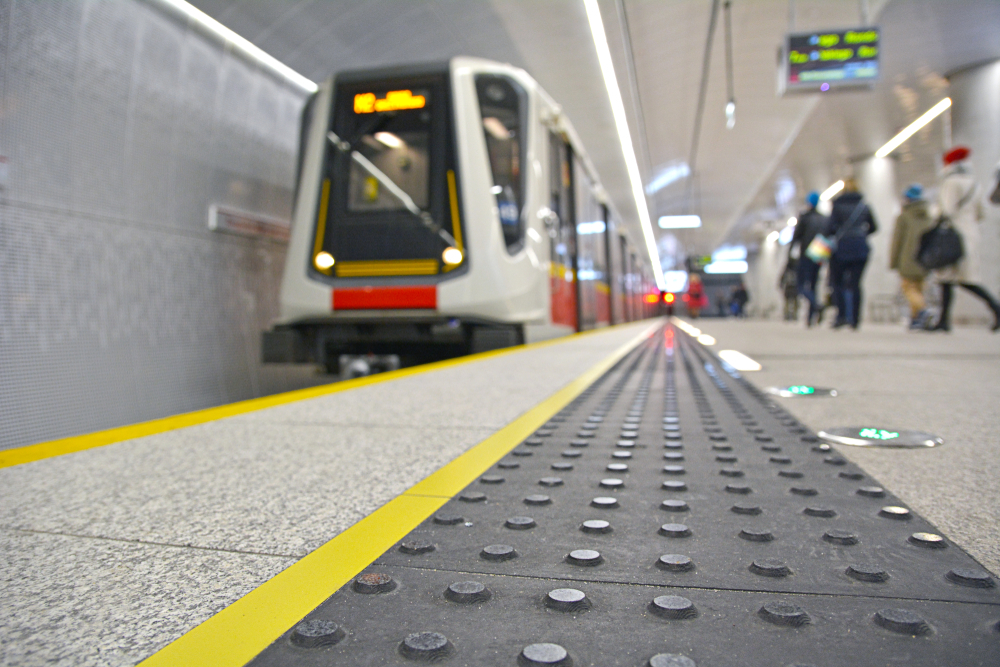
Have you ever noticed small bumps or lines on the ground near stairs, ramps, or pedestrian crossings? These are called tactile indicators, and they play a very important role in helping people, especially those with vision problems, move around safely.
In today’s world, making spaces accessible for everyone is not just a good idea—it’s a responsibility. Whether you’re designing a public park, a shopping mall, or a train station, it’s important to think about how people with different abilities will move through those areas. That’s where tactile indicators come in.
What Are Tactile Indicators?
Tactile indicators are small, raised bumps or bars that are placed on the ground. People can feel them under their feet or with a white cane. They are designed to help people with vision impairments notice important changes in the path ahead, like stairs, road crossings, or platform edges.
These indicators are usually made from strong, durable materials like stainless steel, brass, or polyurethane (PU). They can be installed in many different ways: by drilling into the ground, sticking them on the surface, or embedding them during construction.
There are two main types of tactile indicators:
- Warning indicators (dot-shaped studs) that alert people to a hazard or change, like the start of a staircase or a railway platform.
- Directional indicators (bar-shaped studs) that help guide people along a safe path, such as through a building entrance or across a large open space.
Why Are Tactile Indicators Important?
Tactile indicators are more than just bumps on the ground—they’re life-saving tools for people who can’t rely on sight alone to move around.
Here’s why they matter:
- They guide people with vision loss. Tactile indicators act like a map for the feet, helping people stay on the right path.
- They warn of danger. Whether it’s a stair, a busy road, or a train platform, tactile indicators give a clear warning that something important is coming up.
- They increase safety for everyone. With more people distracted by mobile phones, tactile indicators also help sighted pedestrians stay alert to their surroundings.
- They last a long time. Good-quality tactile indicators are strong, weather-resistant, and don’t wear out easily.
- They meet legal requirements. Many countries, including Australia and India, require tactile indicators in public spaces to follow accessibility laws and standards.
Where Should Tactile Indicators Be Installed?
Tactile indicators should be installed wherever they can help make spaces safer and easier to navigate, especially in busy or potentially risky areas.
Here are some of the most common places to use them:
1. Pedestrian Crossings
At crosswalks, tactile indicators let people know where it’s safe to cross and where the crossing ends. This is especially important for those who can’t see traffic lights or road markings clearly.
2. Staircases and Ramps
A staircase can be dangerous if you don’t see it coming. Tactile indicators at the top and bottom of stairs give people a clear warning. They can also help at ramps and escalators where the ground level changes.
3. Bus Stops and Train Stations
Public transport areas are often crowded and fast-moving. Tactile indicators show people where to stand safely and where the edge of the platform is, helping avoid dangerous accidents.
4. Parks and Outdoor Paths
Parks often have uneven ground, slopes, or natural obstacles like rocks and water. Tactile indicators can guide people safely through these areas and prevent trips and falls.
5. Retail Shops and Shopping Centres
Large malls and stores have lots of foot traffic. Tactile indicators near stairs, elevators, or escalators help customers move safely, especially in busy or dimly lit areas.
6. Hospitals and Schools
These are sensitive environments where safety is critical. Tactile indicators can help guide students, patients, and visitors, especially around entry and exit points.
7. Event Venues and Stadiums
Big events mean big crowds. Tactile indicators near entrances, exits, and seating areas can help people navigate easily, even when visibility is low or the environment is unfamiliar.
8. Government Offices and Workplaces
Offices often have a mix of stairs, ramps, and wide hallways. Tactile indicators make sure all workers and visitors, regardless of ability, can move safely and independently.
9. Hotels and Restaurants
In places where design and style matter, tactile indicators can be installed in a way that blends in beautifully while still keeping guests safe, especially on steps or near dark corners.
Creating Safer Spaces for Everyone
Tactile indicators are a small change that makes a huge difference. By installing them in the right places, you help people move around more confidently, reduce accidents, and create inclusive spaces that welcome everyone.
At Eminent Tactile, we provide a wide range of high-quality tactile indicators made to meet Indian standards. Whether you’re designing a new building or upgrading an existing one, we can help you choose the right tactile solution. Our team offers expert advice, fast delivery, and full support from planning to post-installation.

offer now at
Our Clients





































